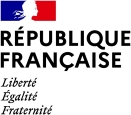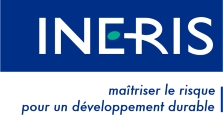Several European texts regulate the use of certain phthalates in consumer goods and in health products, and mainly target phthalates used as plasticizers.
REACH Regulation
On 17 January 2023, ECHA added Bis(2-ethylhexyl) tetrabromophthalate (covering any of the individual isomers and/or combinations thereof) to the list of candidate substances as this substance is very persistent and very bioaccumulative (vPvB).
Inclusion on this list entails immediate obligations for companies:
- They are responsible for managing the risks associated with this substance
- They must provide their customers and consumers with sufficient information to ensure the safe use of articles containing more than 0.1% (by weight)
- Under the Waste Framework Directive, they are obliged to notify to the ECHA SCIP database articles containing this substance in a concentration above 0.1%.
In addition, this substance is candidate for further consideration for possible inclusion in the list of substances (Annex XIV) whose use under REACH is subject to authorisation for placing on the EU market.
Fourteen phthalates are included in the Annex XIV of the REACH Regulation: Benzyl Butyl Phthalate (BBP), Di(2-EthylHexyl) Phthalate (DEHP), DiButyle Phthalate (DBP), DiIsoButyle Phthalate (DIBP), Diisopentyl phthalate, 1,2-Benzenedicarboxylic acid, di-C6-8-branched alkyl esters, C7-rich, 1,2-Benzenedicarboxylic acid, di-C7-11-branched and linear alkyl esters, 1,2-Benzenedicarboxylic acid, dipentyl ester, branched and linear, Bis(2-methoxyethyl) phthalate, Dipentyl phthalate (DPP), n-pentyl-isopentylphthalate, 1,2-Benzenedicarboxylic acid, dihexyl ester, branched and linear, dihexyl phthalate (DnHP) and 1,2-benzenedicarboxylic acid, di-C6-10-alkyl esters or mixed decyl and hexyl and octyl diesters with ≥ 0.3% of dihexyl phthalate. This annex lists substances for which authorization is necessary in order to place them on the market of the European Union (regarding uses targeted by the REACH Regulation).
On 23 November 2021, the European Commission published Regulation 2021/2045 amending Annex XIV by adding endocrine disrupting properties to DEHP, BBP, DBP and DIBP. As a result of these amendments, some previously exempted uses will require authorization:
- medical devices and food contact materials containing DEHP
- mixtures containing either DEHP, BBP, DBP or DIBP at concentrations greater than or equal to 0.1% by weight
- immediate packaging of medicinal products containing DEHP, BBP or DBP
Applications for authorization to use any of these substances in food contact materials, packaging of medicinal products or mixtures (at concentrations above 0.1%) will have to be submitted by 14 June 2023. For DEHP in medical devices, the deadline is 27 November 2023.
Annex XVII of REACH requires that articles containing DEHP, DBP, BBP or DIBP (individually or in combination) in a concentration equal to or greater than 0.1% by weight of the plasticized material shall not be placed on the market. This restriction does not apply to:
- articles exclusively for industrial or agricultural use, or for use exclusively in the open air, provided that no plasticised material comes into contact with human mucous membranes or into prolonged contact with human skin
- aircraft, placed on the market before 7 January 2024, or articles, whenever placed on the market, for use exclusively in the maintenance or repair of those aircraft, where those articles are essential for the safety and airworthiness of the aircraf
- motor vehicles within the scope of Directive 2007/46/EC, placed on the market before 7 January 2024, or articles, whenever placed on the market, for use exclusively in the maintenance or repair of those vehicles, where the vehicles cannot function as intended without those articles
- articles placed on the market before 7 July 2020
- measuring instruments for laboratory use, or parts thereof
Production in the EU of articles exempted from Annex XVII and containing DEHP (e.g. agricultural tarpaulins) still requires an application for authorisation due to the listing of DEHP in Annex XIV. It should be noted that the import from outside the EU of products with a derogation in Annex XVII containing DEHP does not require authorisation.
European Sector Directives
For toys and childcare articles, Annex XVII of the REACH Regulation restricts the use of Di-Isononyl Phthalate (DINP), Di-Isodecyl Phthalate (DIDP) and Di-n-Octyl Phthalate (DNOP): toys or childcare articles which can be placed in the mouth by children may not contain more than 0.1% by mass of plasticised material of any of these phthalates as a substance or in mixtures. Furthermore DEHP, BBP, DBP and DIBP may not be used in toys and childcare articles as substances or in mixtures (individually or in combination) in a concentration equal to or greater than 0.1% by weight of the plasticised material (Annex XVII of the REACH Regulation).
Since July 22, 2019, concentrations of DEHP, DBP, BBP and DIBP in homogeneous materials of electrical and electronic equipments must be less than 0.1% (Directive (EU) 2015/863, known as RoHS Directive). However, the European Commission has issued directives exempting the following uses from authorisation (see Annex III and IV of the RoHS Directive):
- use of DEHP in some rubber components of engine systems (exemption granted until 01/01/2024)
- use of DEHP in plastic components in MRI (Magnetic Resonance Imaging) detector coils (exemption granted until 01/01/2024)
- use of DEHP in ion-selective electrodes applied in point of care analysis of ionic substances present in human body fluids and/or in dialysate fluids (exemption granted until 07/21/2028)
- use of DEHP, BBP, DBP and DIBP in spare parts recovered from and used for the repair or refurbishment of medical devices (including in vitro diagnostic medical devices, and their accessories) (exemption granted until 07/21/2028)
Some restrictions on the use of phthalates in materials in contact with foodstuffs are defined by Directive 2007/19/EC for DBP, BBP, and for DIDP and DINP (together with phthalic acid, diesters with primary, saturated C8-C10 branched alcohols, more than 60 % C9 and phthalic acid, diesters with primary, saturated C9-C11 alcohols more than 90 % C10). As a reminder, the use of DEHP for the production of materials in contact with food is subject to authorization (see Annex XIV).
The European regulations on medical devices (regulation EC n°1272/2008) prescribe that for all phthalates classified as carcinogenic, mutagenic or toxic for reproduction, class 1A or 1B, a labeling is required. In France, the National Assembly adopted Law No.2012-1442 of 24 December 2012 prohibiting the use of tubing containing DEHP in the pediatric, neonatology and maternity activities. In addition, the placing on the European market of (see Annex XIV) is subject to authorisation:
- immediate packaging of medicinal products containing DEHP, BBP or DBP
- medical devices containing DEHP
In France, construction and decoration products (including wall, floor and ceiling coatings) may only be placed on the market if their emissions are less than 1 µg/m³ of DEHP and DBP (Arrêté du 30 avril 2009 relatif aux conditions de mise sur le marché des produits de construction et de décoration contenant des substances cancérigènes, mutagènes ou reprotoxiques de catégorie 1 ou 2).
The European Union has prohibited, via European regulation n°1223/2009, the placing on the market of cosmetics containing DBP, DEHP, BBP, DMEP (Bis (methyl glycol) phthalate), the mixture of phthalates in C5 [N-pentyl isopentyl phthalate, di-n-pentyl phthalate, diisopentyl phthalate] (CAS: 84777-06-0) and the mixture of C7-C11 phthalates [Di (heptyl, nonyl, undecyl) phthalate](CAS: 68515-42-4).
Since November 1st, 2020, bis(2-methoxyethyl) phthalate, DiPP, DPP, DnHP and 1,2-benzenedicarboxylic acid di-C6-8-branched alkylesters, C7-rich cannot be present in textiles, clothing, related accessories and footwear at concentrations higher than 1000 mg/kg (individually or in combination with other phthalates listed in Annex XVII of REACH).
For more information: https://echa.europa.eu/fr/substances-restricted-under-reach/-/dislist/details/0b0236e182ed1fc0

